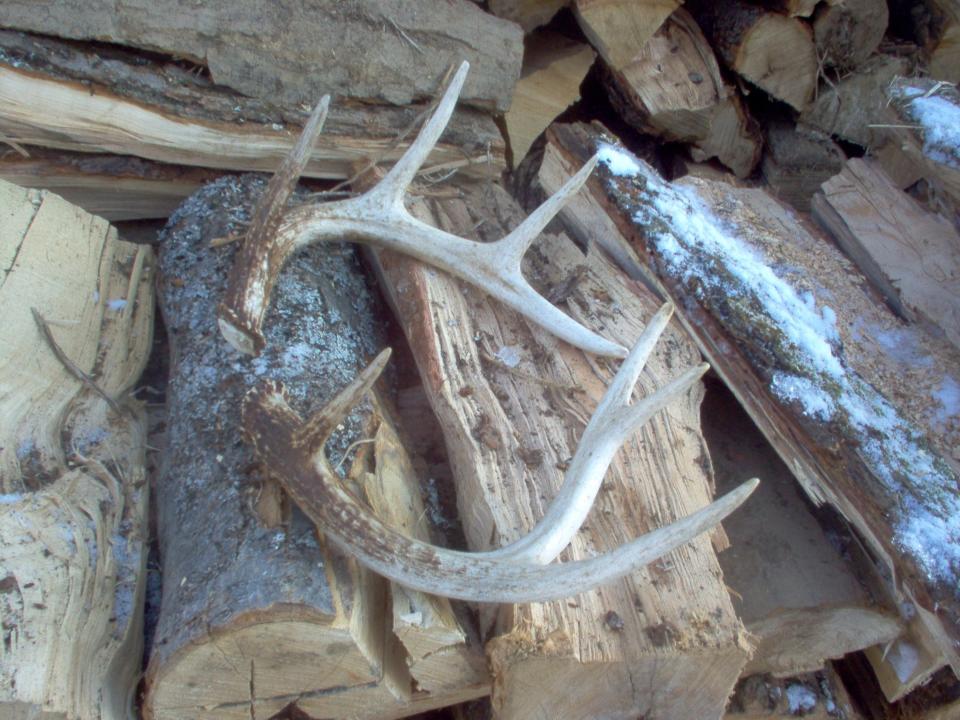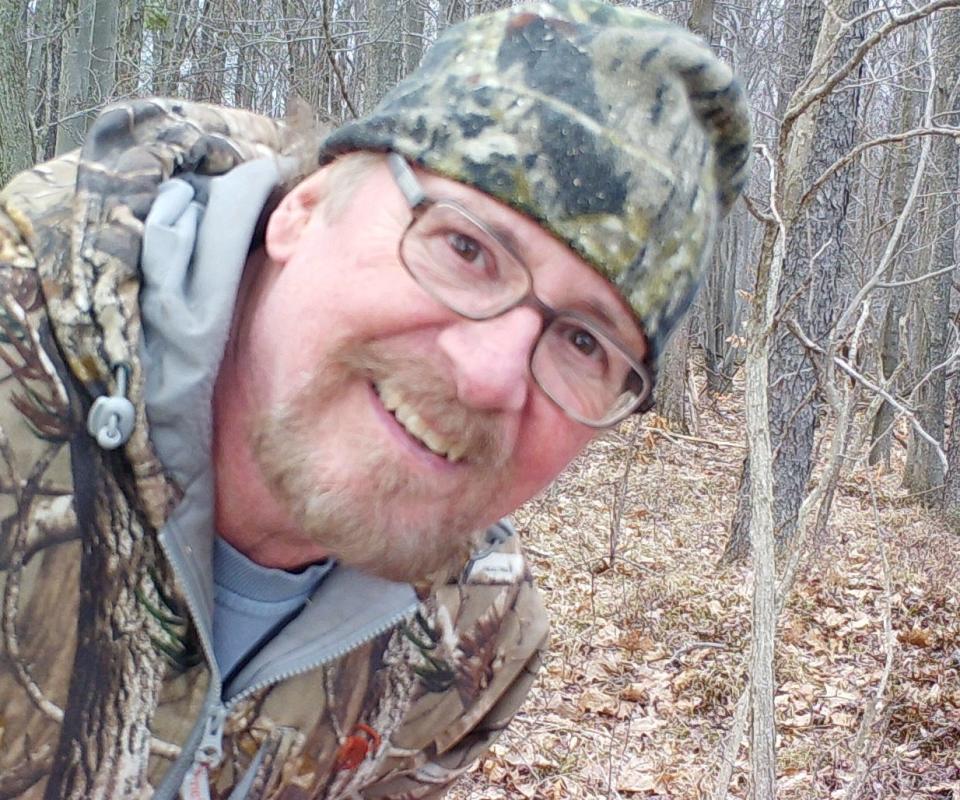Shed antlers are a rare winter prize. Why they are so tough to find, and what they tell us
One of the benefits of having a largely snow-free winter (so far) is that it allows those of us who enjoy deer antlers a chance to find some early “drops.”
But in January, many bucks are still carrying their headgear … though some have shed.
But sometimes we have good luck.
After walking along a field, I pushed through some heavier cover along an obvious deer trail, and there, right in the middle of the path, was a nice four-point shed. About 10 feet further along, there was its mate.
Rare luck indeed.
Other times I’ve found shed antlers half buried under leaves, sometimes in thick brush, and other times in open fields and under spruce trees and cut cornfields.
Most shed antlers (sheds or drops) don’t last long in the woods.
Squirrels, mice and porcupines munch them quickly. They seem to chew down the tines first, and then go for the main beams.
Actually, bones of any sort don’t last long here.
Antlers, which are bones, are chewed for their precious bonanza of calcium, magnesium, and other elements and trace minerals that are so rare in the leached out moonscape of these high Appalachians.
Antlers do get broken, fractured through tremendous concussion and torque by bucks fighting.
Imagine two big, bucks locked together by their antlers, trying to throw each other and those antler tines, at the point of collision, and force. A broken tine, a cracked beam … each an indelible testament to a forgotten woodland battle for breeding rights.
Bucks don’t really fight over much else.

They spar, lock horns, jab each other, posture, scuttle sideways with ears back, and intimidate.
But a really serious whitetail buck fight, the kind that results in broken antlers and often injuries to the combatants, bet on it, it’s over a gal.
Finding any shed is cool, but finding one with five points is a rarity. Also finding a matched pair is a rare find, too, in my experience.
In late winter, it is not unusual to get trail cam photos of bucks carrying only one antler.
My sheds find an inevitable pilgrimage to the garage where they remain displayed in good company with others of a like kind.
The antler collection has five-on-a-side, others with four- or three-on-a-side, some forks and even spikes.
Chances are the buck that dropped the sheds I found will be an 8-point this year, too, but the questions, the fuel for dreams come November are how big, how many points, and will he still be there?
‘Course it’s hard to know for sure, but bucks in the highlands of Western and Central New York that have four points on-a-side and a beam diameter of over 1.25 inches, are at least a 2.5-year-old animal, probably scoring about 90 gross B&C points when both sides were the same. Yearling bucks’ beam diameter averages here are half that.
Researchers say that on average, bucks gain 20% of their antler mass by using a measurable scoring system, in their jump from a 2.5-year-old animal to 3.5 years of age.
Therefore, the buck that grew the two four-point sheds would hopefully score around 110 this upcoming season, certainly a nice buck.
It possibly could make it to that stratospheric height of a minimum Pope and Young buck (archery) status (125) if he made it through next fall’s season.
Of course he might not hang around, as once bucks get older, they tend to travel far and wide during the Rut, or breeding season, in the fall.
Some bucks decide to pull up their stakes and set up shop a few ridges or even more away. We like to think that buck we see will hang around from summertime when we catalog our trail cam photos of big bucks in velvet.
More: Mild winters have hidden cost: How a cold snap can help protect ecosystems from invaders
But by the time archery season rolls around, it’s a crapshoot. Some resident bachelors stay and some head out as the bachelor group dissociates.
Back a few years ago, trail cams recorded for two years, lots of images of a high-racked seven-pointer with an easily recognizable trademark … only one brow tine. He had become somewhat of a local celebrity, sneaky, nocturnal, wise, but not camera-shy.
Never saw him again.
Learned that he was tagged on the Opening day of the following year’s regular firearm season two miles and three ridges away.
Can’t say we didn’t have our chances.

And will the eight-point buck that cast the 4-point sheds be an 8-pointer again, assuming his right side and left grow the same?
Researchers say that a rack is genetically determined. The number of points and characteristics of a buck’s antlers are the same each year (unless injured), while the overall size and spread increases.
After the antlers are shed, in a couple months, brown and swelling bumps begin appearing on the buck’s head.
Growing by the day, and powered by their two main components, protein and calcium diphosphate, the latter chemical being at such a rare premium on our hardpan ridges, are the stuff dreams are made of.
-- Oak Duke writes a weekly column.
This article originally appeared on The Evening Tribune: 'Shed hunting' for deer antlers provides a window into the future

